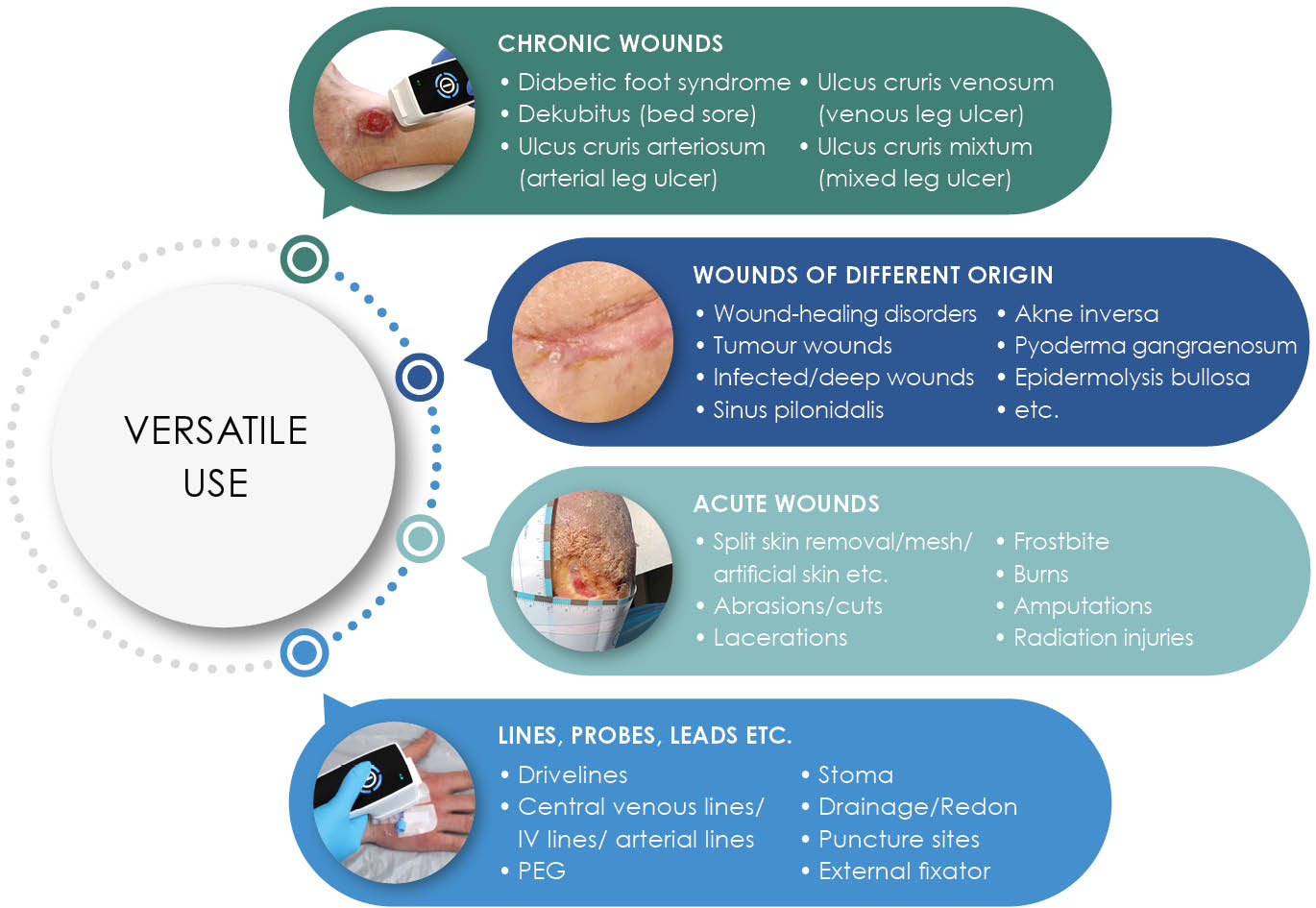Wound treatment with cold plasma
The efficacy of cold plasma
With our plasma care®, bacteria including multi-resistant pathogens, viruses, fungi and spores are inactivated by the cold plasma. At the same time, the cold plasma promotes wound healing and supports simple, fast and effective wound healing. This treatment method is also free of allergies and side effects.
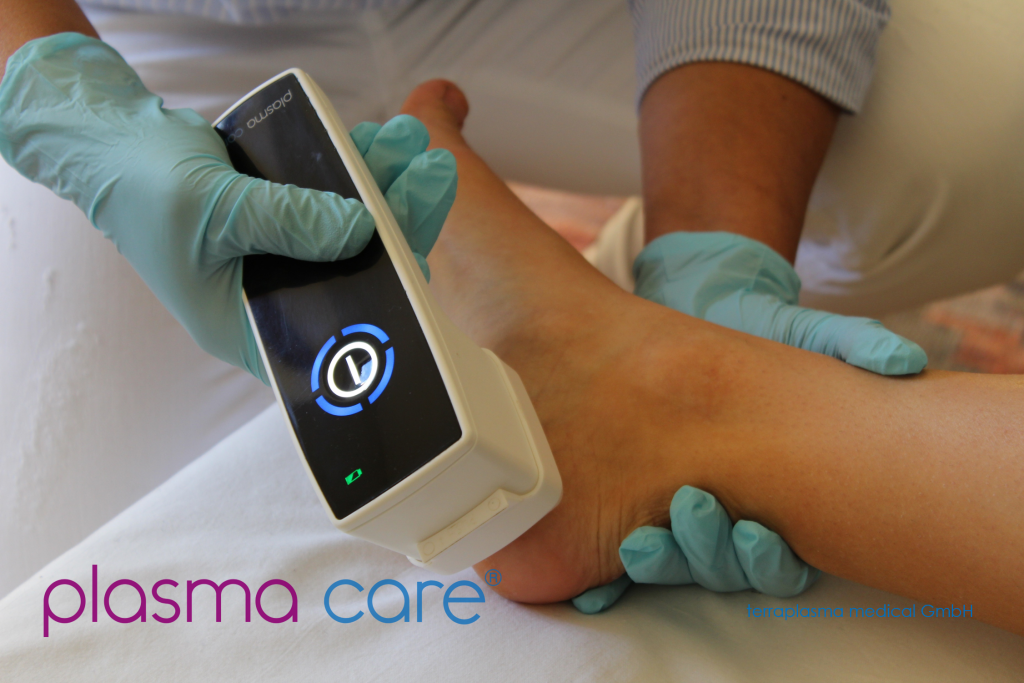
Facts about CAP in wound treatment
Plasma care® uses cold plasma to inactivate bacteria including multi-resistant pathogens, viruses, fungi and spores. At the same time, it supports wound healing. Simple. Fast. Effectively. Free from allergies and side effects.
Which wounds is cold plasma therapy suitable for?
In principle, cold plasma therapy is suitable for all wounds, as CAP works physically, i.e. regardless of the cause of the wound. It triggers the body’s own processes, which support wound healing and lead to wound closure.
Advantages of therapy with plasma care®:
- Inactivation of bacteria (incl. MRSA), fungi and viruses
- Promotion of wound healing
- No allergies
- No development of resistances
- Can be delegated
- Suitable for patients with pacemakers or defibrillators
- Treatment area with one spacer: 78 cm²
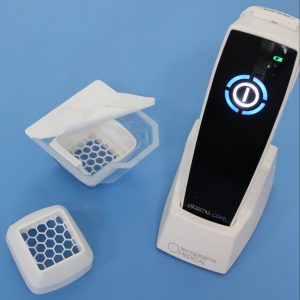
Preventive after surgical interventions
Explanatory videos
Wound treatment plasma care®
Commissioning and application of the plasma care®
Cleaning of the plasma care®
What is cold plasma?
Cold atmospheric plasma is a partially ionized gas at room temperature. During the energy supply, the so-called plasma cocktail is created. This is poison for bacteria, including multi-resistant pathogens, and stimulates cell division in healthy human cells.
If the cold plasma with a high proportion of reactive species encounters bacteria or multi-resistant pathogens (MREs), the cellular structures including DNA are destroyed and the bacterium inactivated.
Antibiotic allergies and intolerances do not affect this effect.
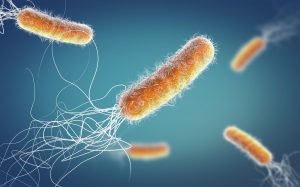
Orange colored multiple antibiotic resistant Pseudomonas aeruginosa bacterium - 3d illustration
The most important processes in the cell at a glance: How does plasma affect bacteria?
The effect is quite different in healthy human cells. In them, survival mechanisms are stimulated by the reactive species and cell division is activated.Die Ausschüttung von Zytokinen wird angeregt, die das gesunde Zellwachstum anregen.
- The formation of new vessels from already created blood vessels (angiogenesis) is promoted.
- The cell metabolism is stimulatet.
For the wound, this means a better blood supply and an overall more active healing process.
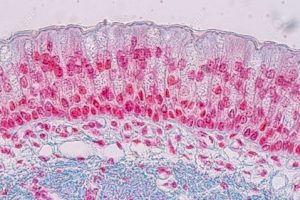
For the wound, this means an improved blood supply and overall more actice healing process?
For which wounds is cold plasma therapy suitable?
In principle, cold plasma therapy is suitable for all wounds, because KAP acts physically, i.e. regardless of the cause of the wound. It sets the body’s own processes in motion that support wound healing and lead to wound closure. An experienced wound manager can already see 2 – 3 treatments to see whether the wound responds to KAP therapy.
The wound treatment spectrum at a glance:
Course of treatment
Now the plasma care® is used. Afte treatment with plasma care, you may decide whether you apply an additional antiseptic to prolong the bacterial effect. After that, the wound is bandaged.
The usal routine for changing wound dressing can be maintained. Wound treatment with plasma care® – 3:16 Min. VideoImportant: A wound area must be treated for at least 60 seconds. If a wound is heavily contaminated, a wound area can be treated for up to 3 minutes.
Easy handling of the plasma care®
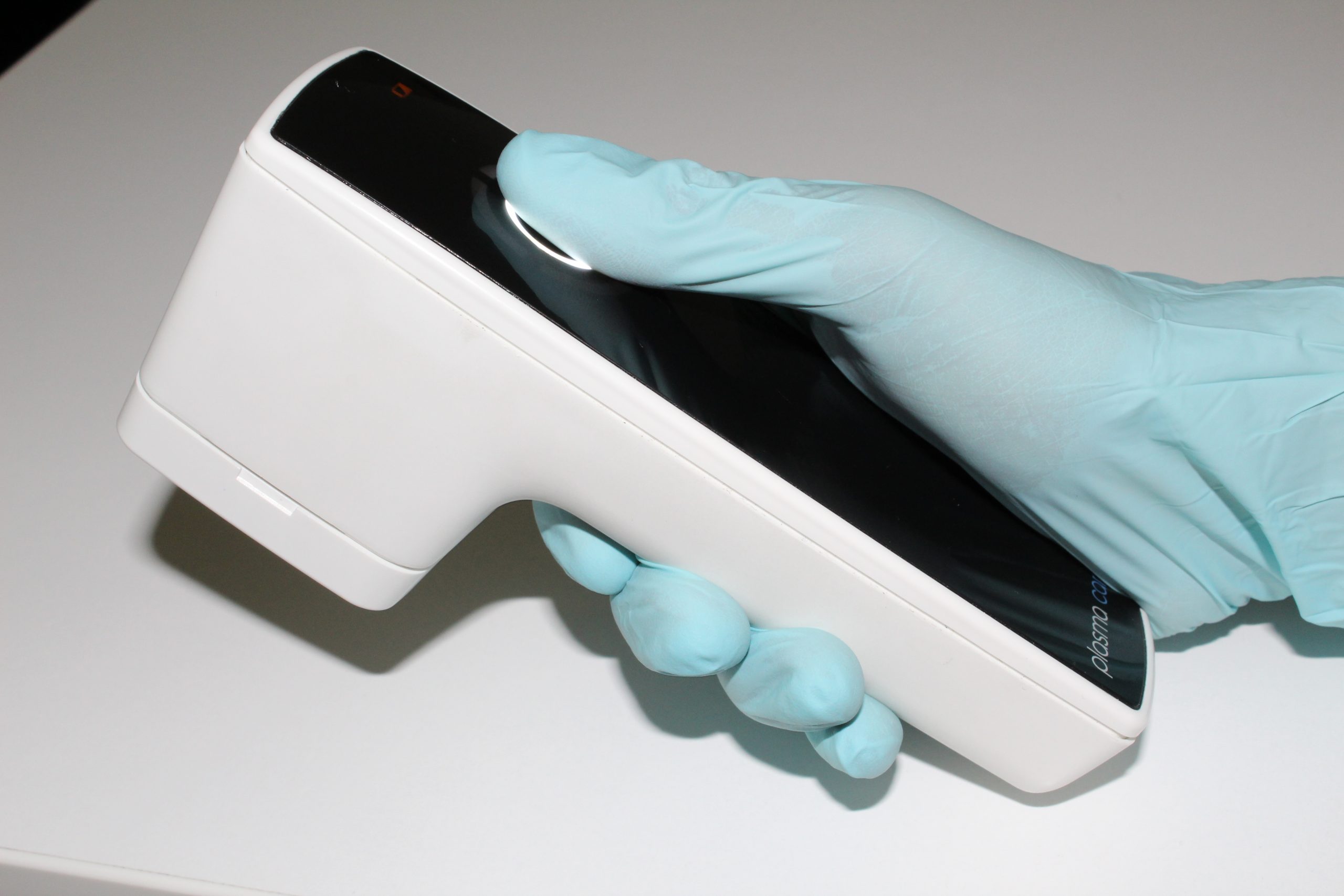
1.
Turn on the device via touch button.
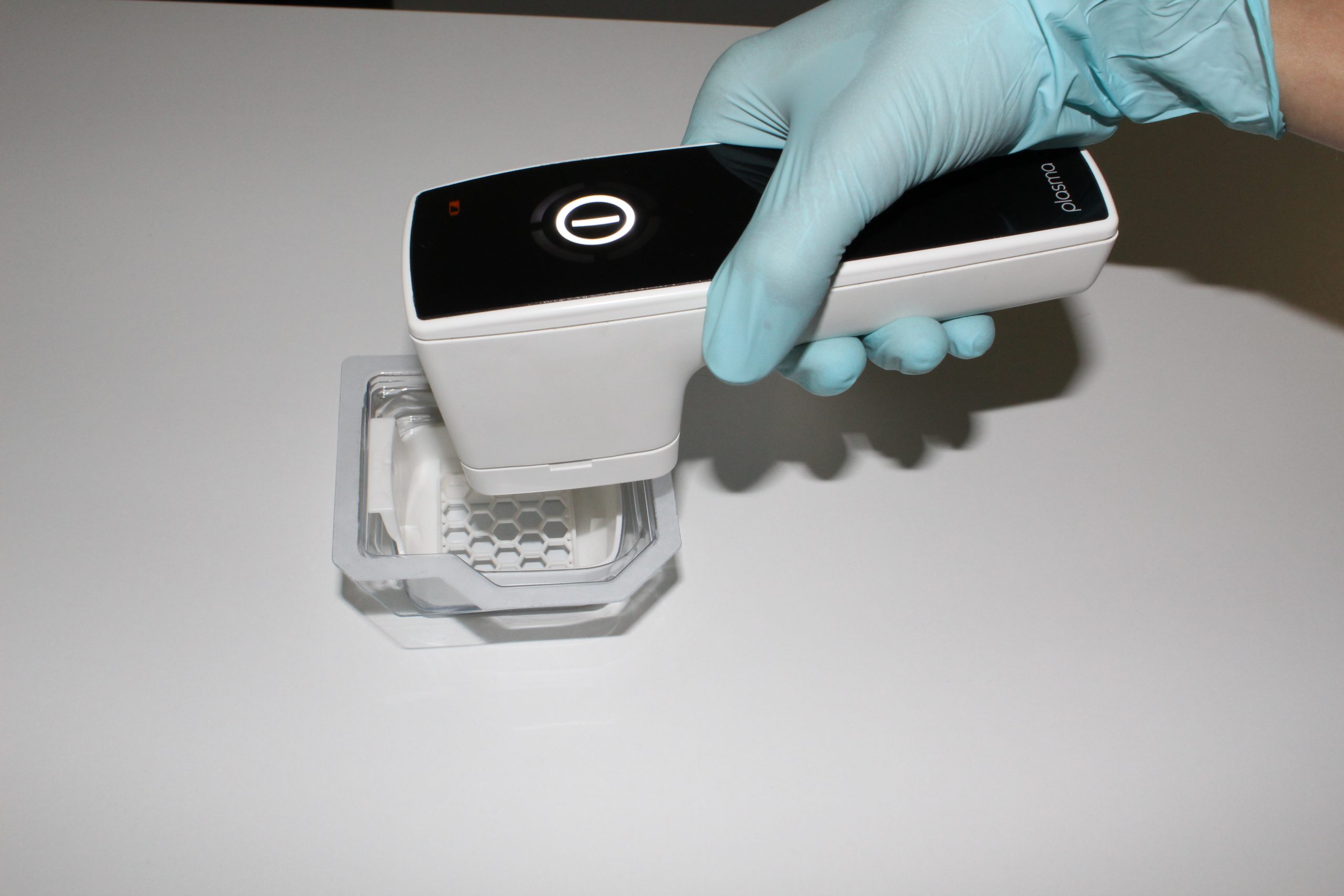
2.
Attach spacer.
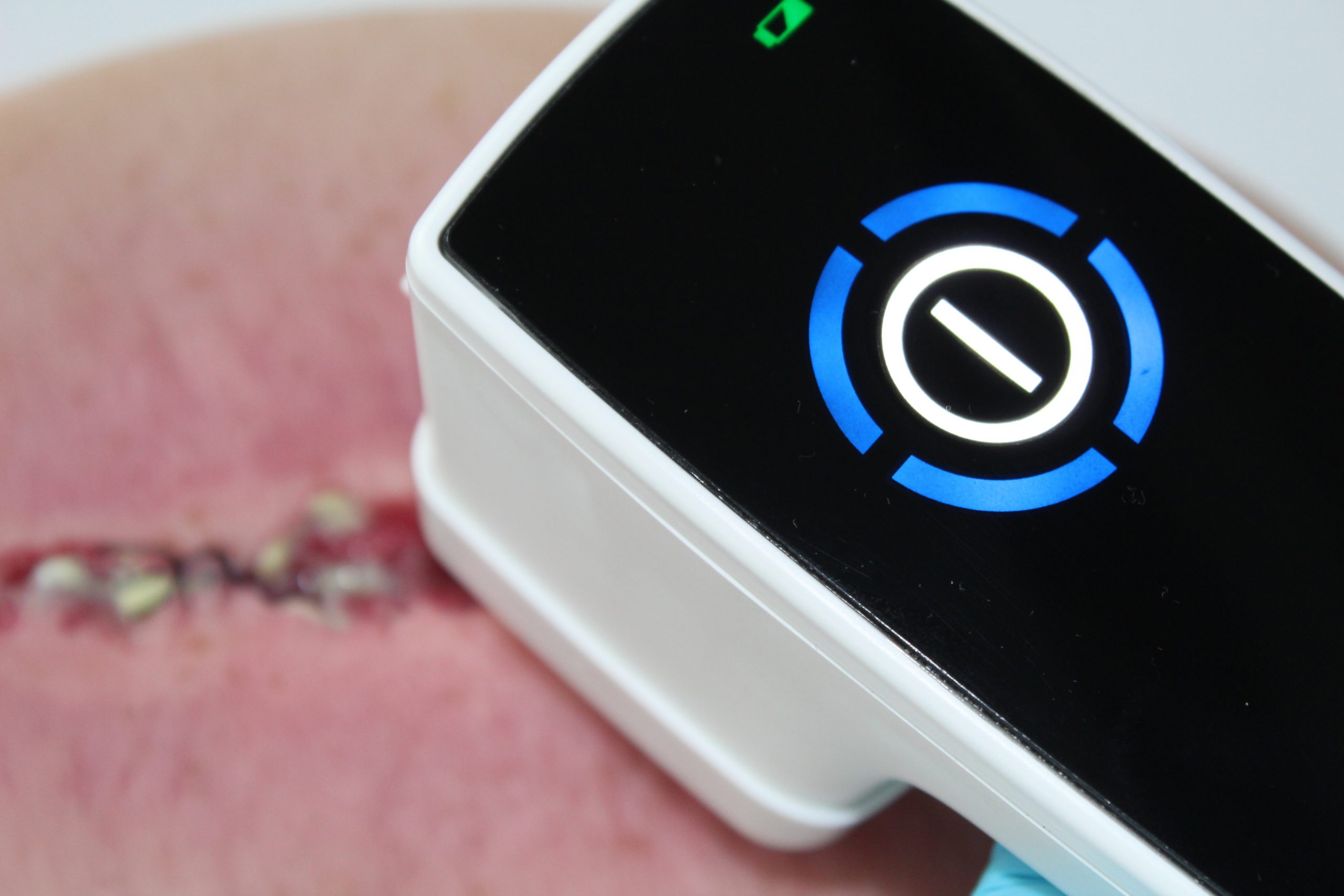
3.
Place the plasma care® on the wound.
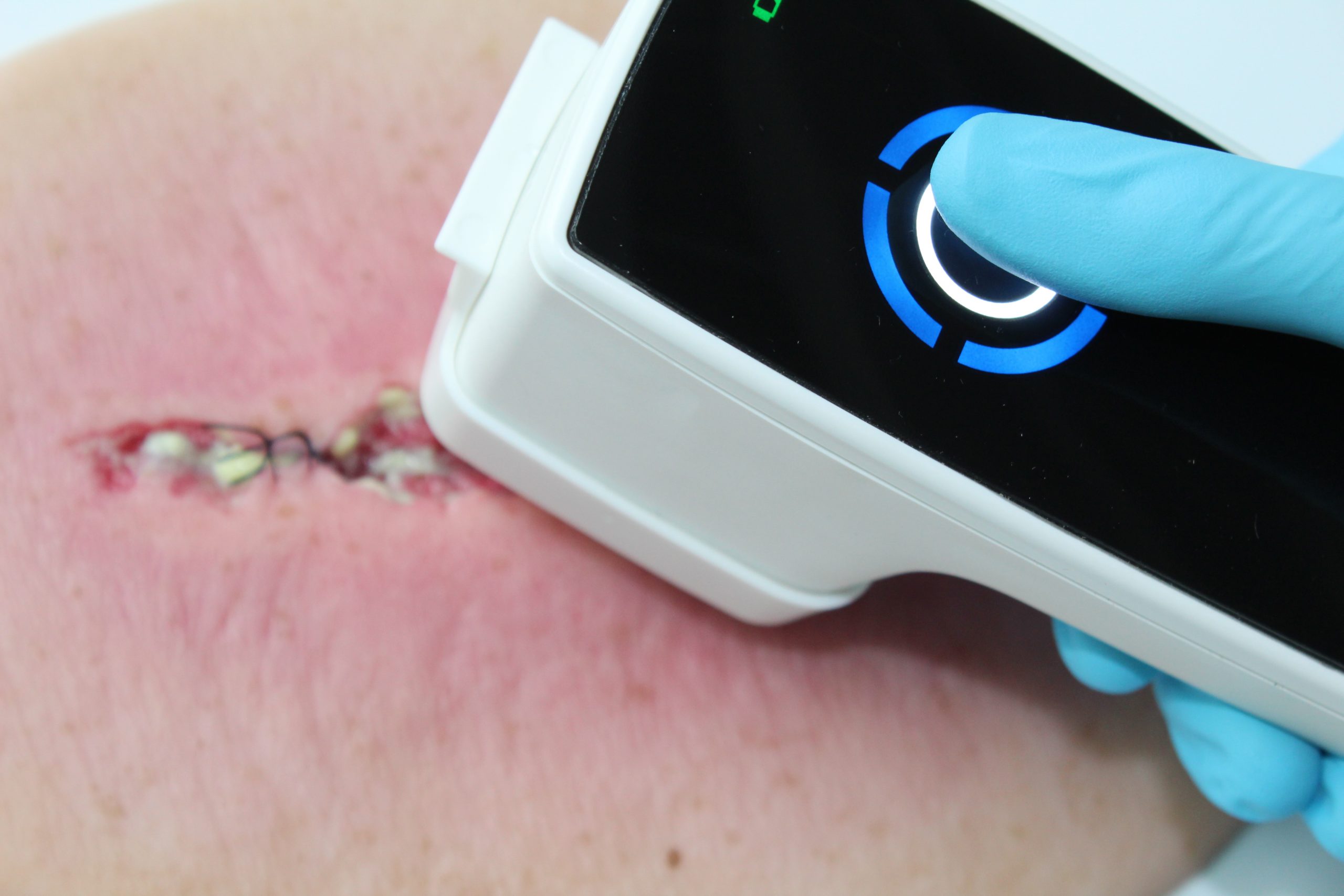
4.
Start Teatment with the touch button (3 sec.).
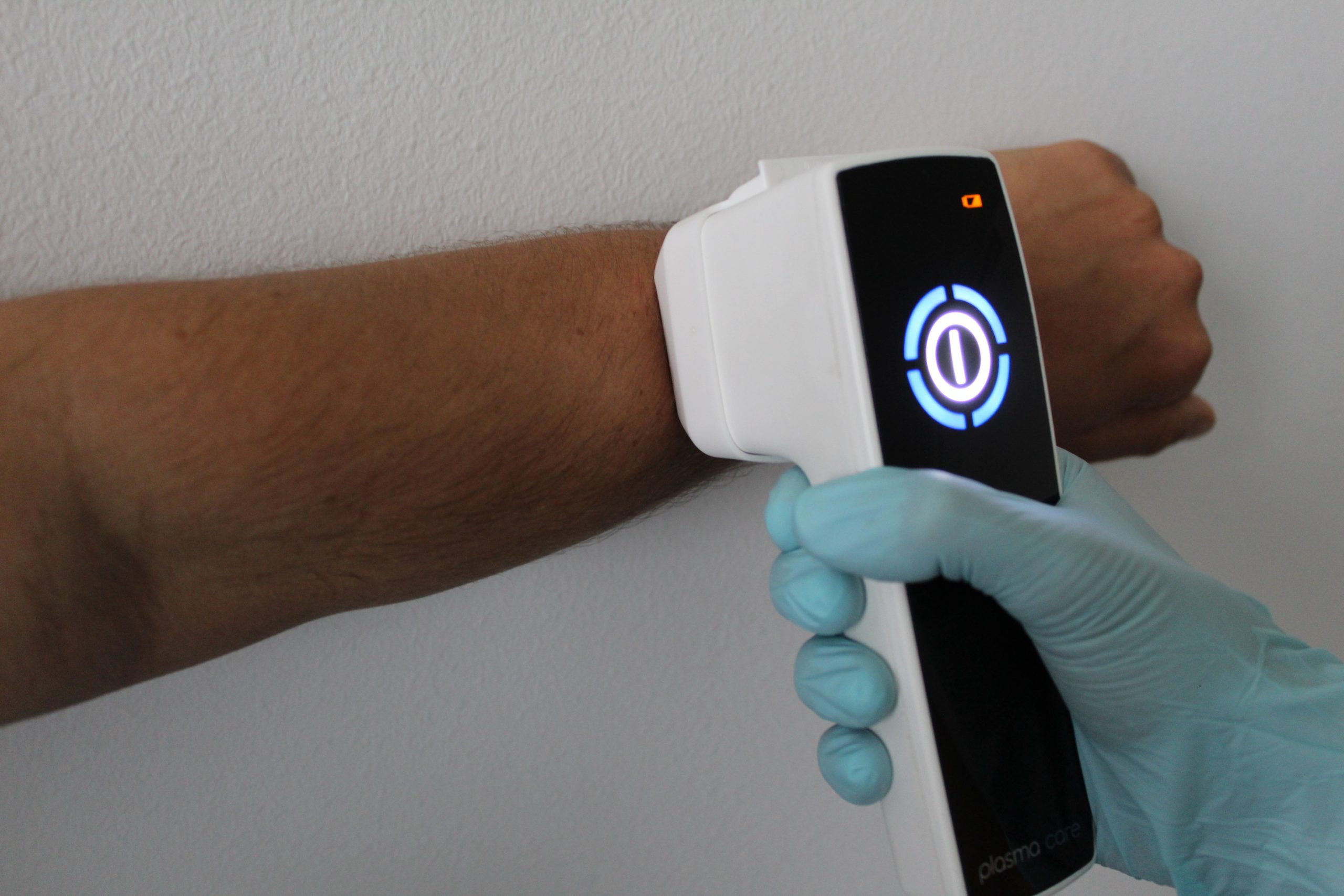
5.
Hold the device in position on the wound, the device stops automatically after 60 sec.
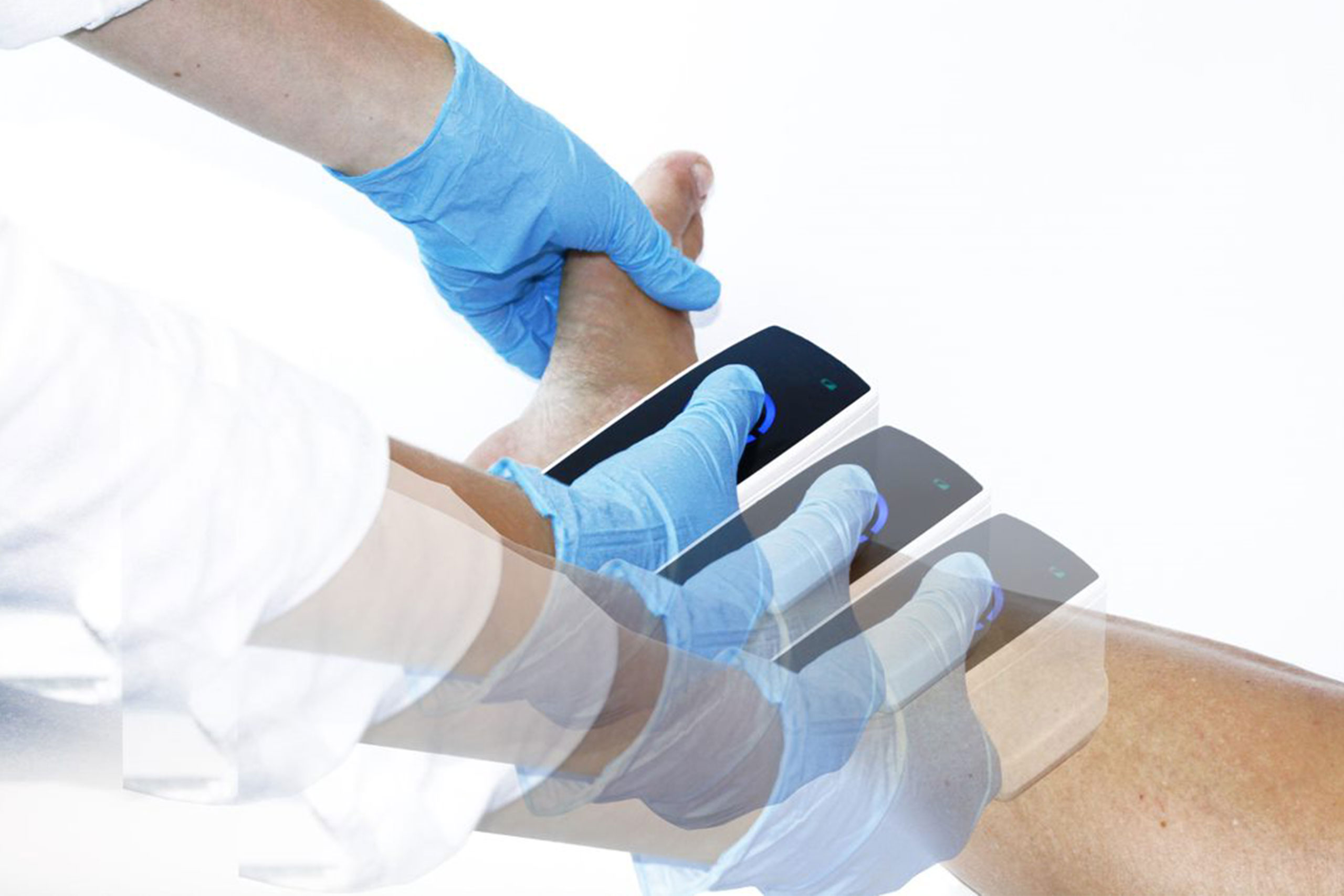
6.
With larger wounds, repeat this process.
A spacer can be used 6 times whithin 10 min. during a treatment.
Important: Please do not switch of the device between the treatment steps.
A training spacer is included in the scope of delivery for each device. Use this to familiarize yourself with the reaction time of the touch button and to internalize the processes for a larger wound. Pick up the training spacer well, you may want to demonstrate the device to a colleague without using a sterile spacer.
Case Reports - Chronic wounds
Plasma care® has already been successfully used in more than 30,000 wounds. A selection of case reports provides an initial overview.
Do you have an interesting case that is not yet represented in our case reports?
Contact us at: anfrage@terraplasma-medical.com
Wound symptoms: post-operative wuond healing disorder
Patient: 77-year-old patient
Disease: Soft tissue trauma after car accident, flap plasty and split skin transplantation wound healing disorder
Concomitant disease: venous insufficiency, tendency to edema formation, heart failure
Treatment: Initially 2 x weekly for 1 min., then 1 x weekly, a total of 18 treatments in 10 weeks.
Result: Wound completely epithelialized after 10 weeks
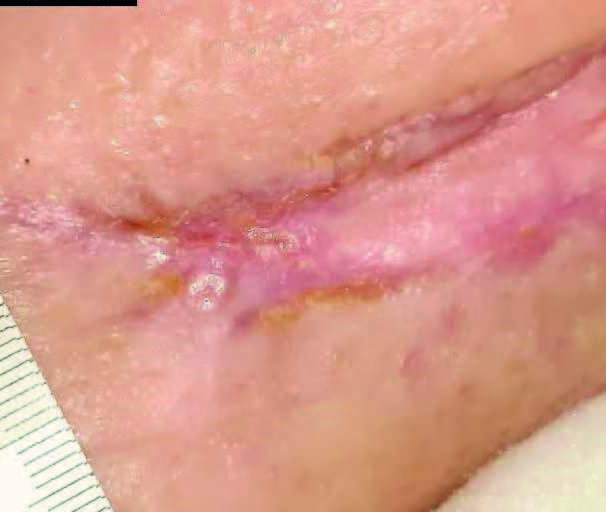
Wound symptoms: diabetic foot syndrome
Patient: Obese 55-year-old patient
Disease: Diabetes mellitus type 2 / high blood pressure / lipid metabolism disorder / metabolic syndrome / dilated cardiomyopathy / chronic. Heart failure
Initial situation: Partial amputation at the beginning of 2020 / Wound conditions problematic
Treatment: 1 x weekly, 1 minute, 7 weeks
Result: after 7 weeks wound area reduced to 90%
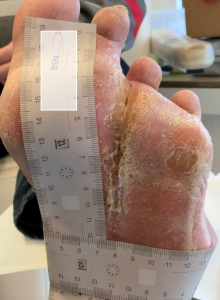
wound symptoms: Bedsores infected with P. aeruginos
patient: 64-year-old patient, requiring ventilation, obese
Disease: Pressure ulcer in the neck at contact point Ventilation mask, infected with P. aeruginos
Treatment: 2 minutes, in the first week daily - leads to a significant reduction in wound area. Then several times as needed 1 min.
Result: wound closure after 4 weeks
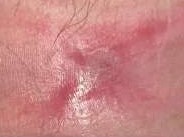
Wound symptoms: Charcot Foot
Patient: 64-year-old patient, obese
Disease: Diabetes mellitus type 2, for several months in treatment wg. plantarer
Pressure ulcerations
Treatment: 1 x weekly 1 min.
Result: complete healing after 5 weeks
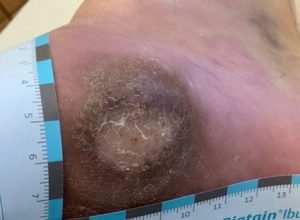
Wound symptoms: Minor wounde – open bladder
Patient: 39-year-old patient, no diseases
Disease: Bladder at a pressure point in the ski boot
Treatment: 4 x 1 minute
Result: Reduction of wound area 70 % after 4 days with constant further pressure load
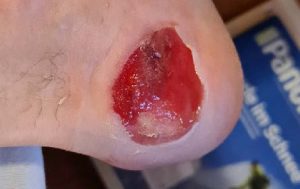
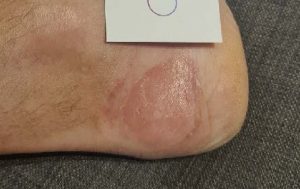
“
User testimonials
What experts say about the plasma care®
Quellen zum Thema Kaltplasma in der Medizin
van Welzen, A. et al. The Response and Tolerability of a Novel Cold Atmospheric Plasma Wound Dressing for the Healing of Split Skin Graft Donor Sites: A Controlled Pilot Study. Skin Pharmacol. Physiol. 1–9 (2021) doi:10.1159/000517524.
Heinlin, J. et al. Randomized placebo-controlled human pilot study of cold atmospheric argon plasma on skin graft donor sites. Wound Repair Regen. Off. Publ. Wound Heal. Soc. Eur. Tissue Repair Soc. 21, 800–807 (2013).
Questions about cold plasma therapy
There are many questions about cold plasma therapy: Which bacteria does cold plasma affect? How long does the therapy last? …. We have compiled the most frequently asked questions and answers for you here. You are also welcome to contact us directly.


